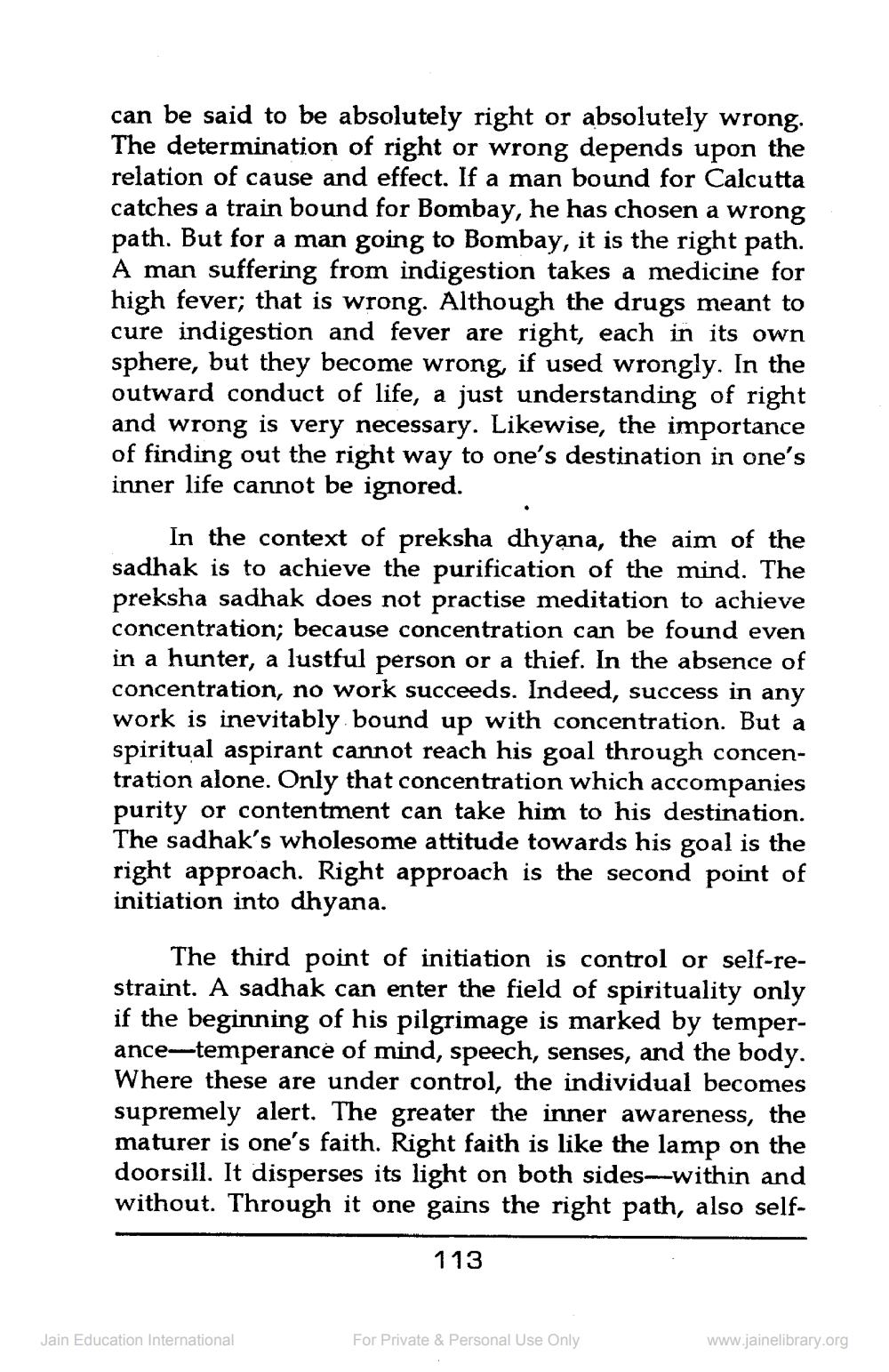________________
can be said to be absolutely right or absolutely wrong. The determination of right or wrong depends upon the relation of cause and effect. If a man bound for Calcutta catches a train bound for Bombay, he has chosen a wrong path. But for a man going to Bombay, it is the right path. A man suffering from indigestion takes a medicine for high fever; that is wrong. Although the drugs meant to cure indigestion and fever are right, each in its own sphere, but they become wrong, if used wrongly. In the outward conduct of life, a just understanding of right and wrong is very necessary. Likewise, the importance of finding out the right way to one's destination in one's inner life cannot be ignored.
In the context of preksha dhyana, the aim of the sadhak is to achieve the purification of the mind. The preksha sadhak does not practise meditation to achieve concentration; because concentration can be found even in a hunter, a lustful person or a thief. In the absence of concentration, no work succeeds. Indeed, success in any work is inevitably bound up with concentration. But a spiritual aspirant cannot reach his goal through concentration alone. Only that concentration which accompanies purity or contentment can take him to his destination. The sadhak's wholesome attitude towards his goal is the right approach. Right approach is the second point of initiation into dhyana
The third point of initiation is control or self-restraint. A sadhak can enter the field of spirituality only if the beginning of his pilgrimage is marked by temperance-temperance of mind, speech, senses, and the body. Where these are under control, the individual becomes supremely alert. The greater the inner awareness, the maturer is one's faith. Right faith is like the lamp on the doorsill. It disperses its light on both sides--within and without. Through it one gains the right path, also self
113
Jain Education International
For Private & Personal Use Only
www.jainelibrary.org




